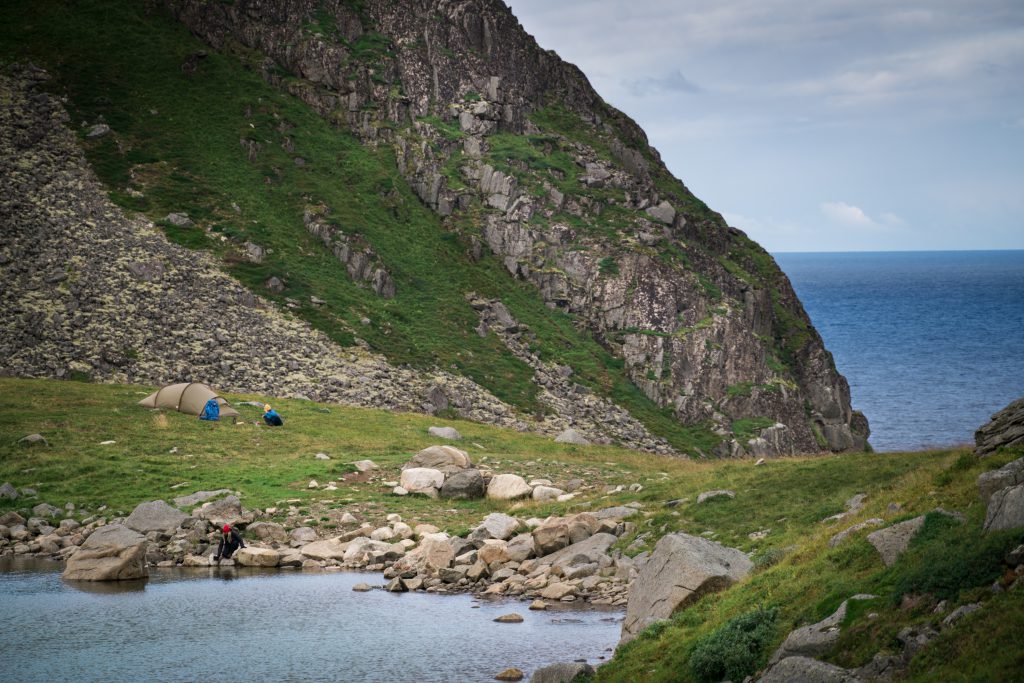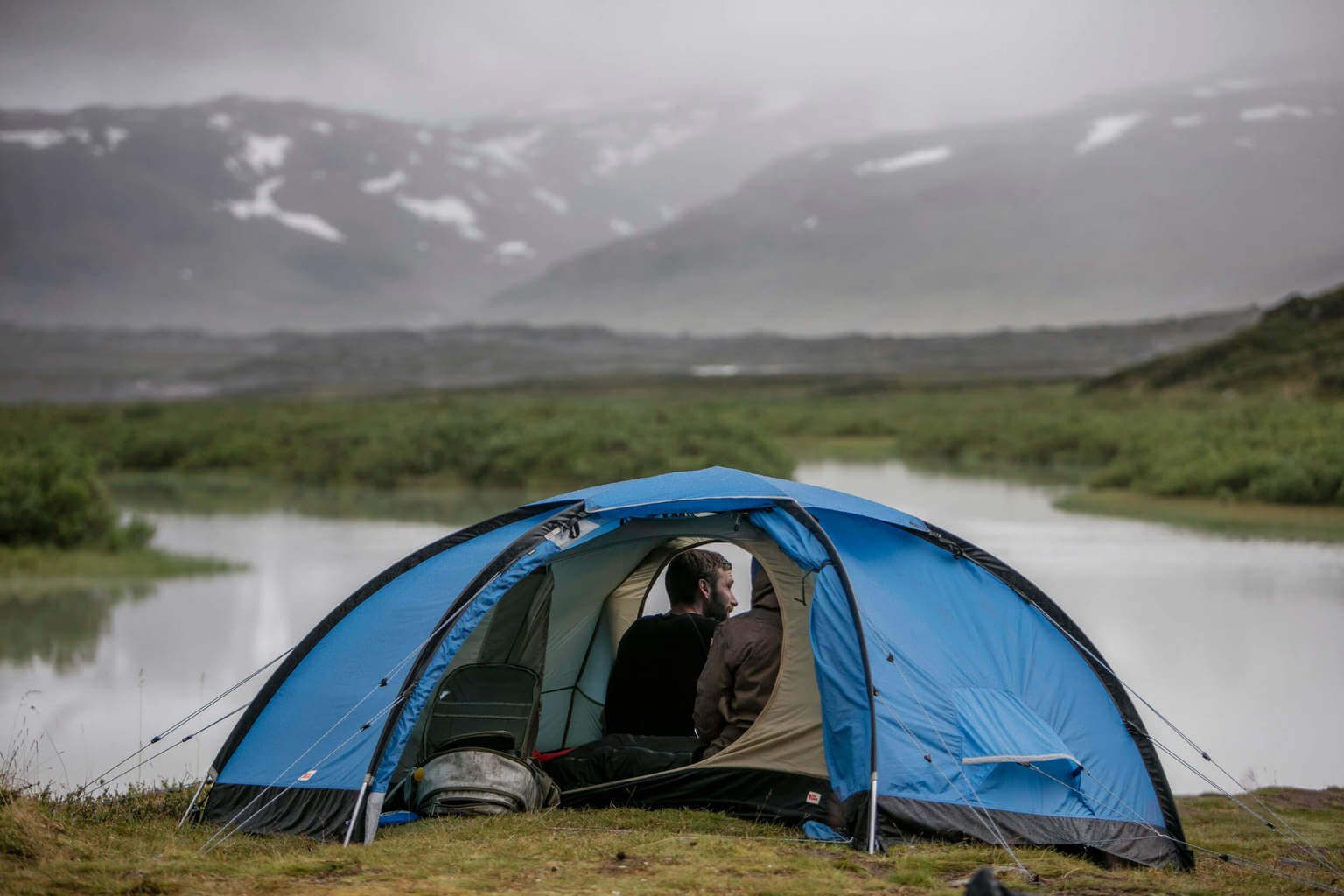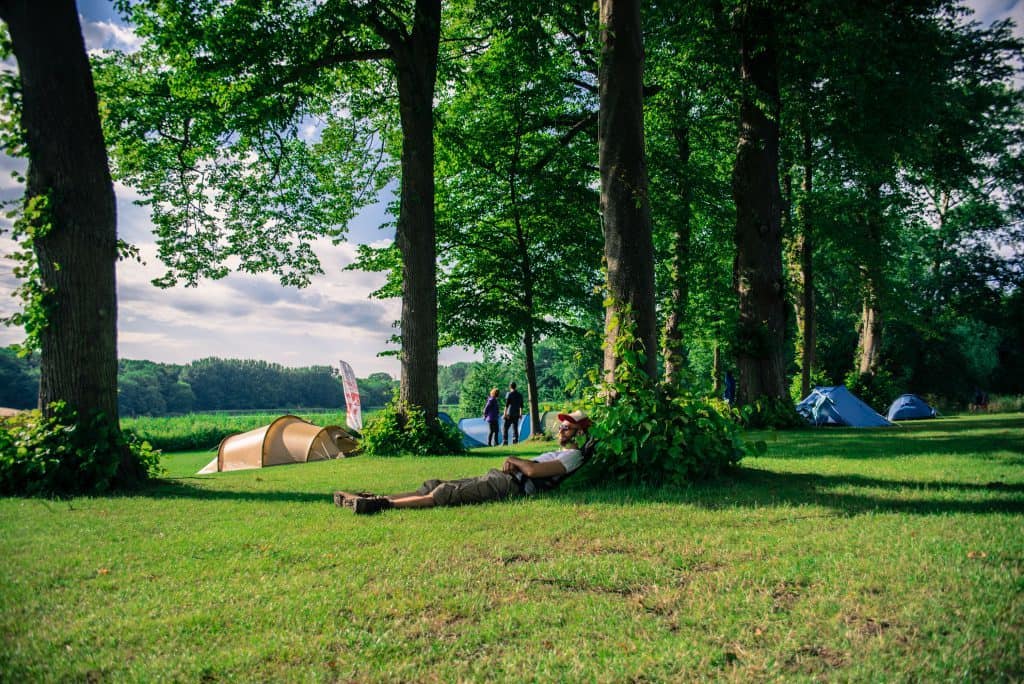5 Tips for choosing a campsite
In Sweden (as in Finland and Norway) we have a public access law called allemansrätten. Among other things (including the responsibility to treat nature with respect – to not disturb or destroy it), it affords us the freedom to pitch our tents virtually anywhere.
Great! This gives you complete freedom over where you camp. But sometimes too much choice hinders decision making. That’s why we’ve put together this list. It should make choosing your next wilderness campsites a little easier.

1. Close to a water source (preferably a river or large lake)
Cooking, washing and drinking – water is an essential part of camping. Pitch up somewhere that’s close – but not too close, ideally more than 60m – to fresh water.
However, because of the risk of flash flood, you’ll want to avoid camping on low-lying ground in the floodplain. So…

2. Preferably on higher ground
A few metres above the water level should ensure you don’t wake up in a lake. Another advantage is that higher areas usually benefit from more of breeze, which helps keep away mosquitoes that like to hang around slow-moving bodies of water, and improves air flow through your tent.
3. Ideally somewhere flat and smooth
Choosing a campsite because it offers spectacular views does not offer any compensation when at 3am you start slowly sliding slowly downhill in your sleeping bag. Flat ground also makes cooking easier. Remove any lumps or sharp and spikey objects such as stones, sticks and pine cones before you pitch your tent.
4. Look for shelter (particularly if this will be your basecamp for a while)
Once the sun’s warming rays hit your tent, it will start to turn into a sauna. Trees provide welcoming shade but also protection when it’s windy. So unless you like sleeping in a sauna and feeling the full force of the wind, seek a campsite under a few trees.

5. Plan ahead
This all works in theory, but if you don’t have even an inkling about where to pitch your tent, disappearing daylight or rumbling stomachs will dictate where you set up camp. Use a map over the area to plan where to camp. You don’t need to nail it down to the exact spot, necessarily, but you should have realistic goals of how far you can trek in a day – being generous with time – and a rough idea of the most suitable campsites.
